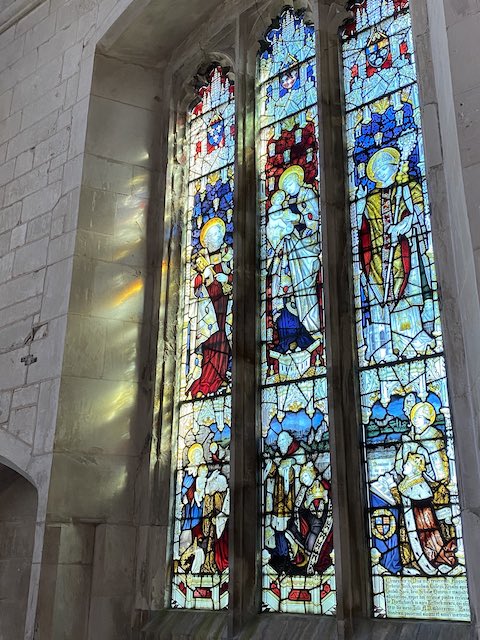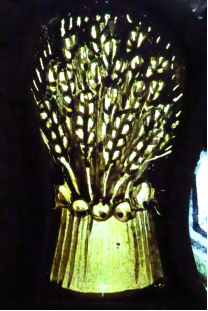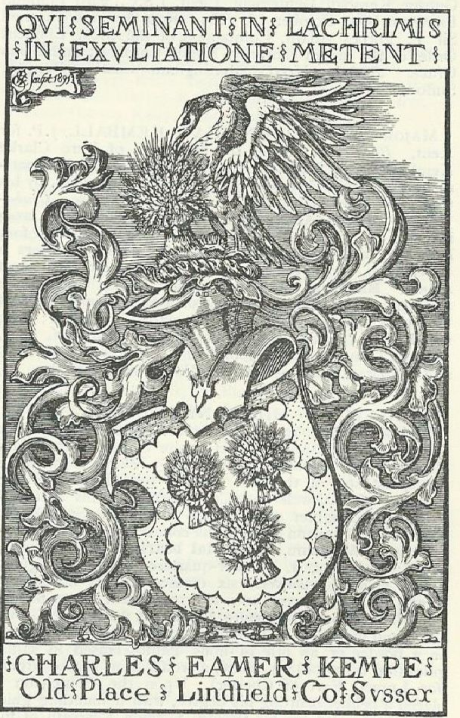Charles Eamer Kempe Stained Glass Window

- Subjects: St Peter, Virgin & Child, St Nicholas/Nativity, Kings, William of Waynefleet (Lord Chancellor and Bishop of Winchester who founded Magdelen College, Oxford in 1448.)
- Made: 1901
- Dedicated to: Rev. Augustus Frederick Birch 1898 (vicar at the time of the 1867 restoration)
- Donated by: Scholars and Friends.
- Revd Birch was a tutor at Eton College and one of his old pupils was Lord Brownlow who held the gift of the living of Edlesborough. The window was donated by his 'friends & scholars' so probably Brownlow paid for much of it.
- It seems Guillaume Waneflet mentioned in the window was an early provost of Eton and one of the houses at Eton is named after him.
- Craftsman: Charles Eamer Kempe.
He set up his own highly successful firm in 1866 and insisted that the members of the studio should remain anonymous, and that only the firm's name should be credited.
The firm perfected the use of silver stain on clear glass which leaves a yellow tint.
Heraldry - Kempe's Wheatsheaf

HERALDRY - Kempe’s Wheatsheaf
In the lower left hand corner of the stained glass window is a small golden wheatsheaf or ‘garb’ tucked away almost out of view. This was the trademark of Victorian stained glass designer Charles Eamer* Kempe (1837–1907). Many craftsmen chose a symbol that had some meaning to them as their signature and, in this case, the wheatsheaf was taken directly from Kempe’s personal coat of arms.
The full blazon or description of Kempe’s shield is as follows:

Gules, three garbs Or, on a bordure engrailed of the second, eight hurts.
i.e. the background is red (Gules), the wheatsheaves are golden (Or) and on a spiky (engrailed) gold border there are eight blue roundels (hurts).

So the inconspicuous wheatsheaf relates directly to his own shield and is intimately linked to his family’s status and his place in society – a very personal signature.
You may sometimes see a black tower accompanying the golden wheatsheaf and this relates to Walter Towers who was a cousin of Kempe and became chairman of the company of C E Kempe & Co., after Charles’ death in 1907.
*Eamer was Charles Kempe’s mother’s maiden name
